Sweet Auburn and more specifically Auburn Avenue has a lot of history; so much of great importance has happened on just that one street. The predominantly African American area had many different businesses, classes, and functions.
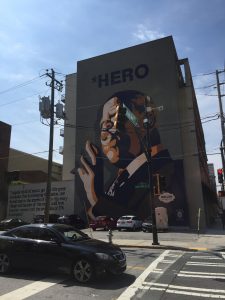
John Lewis mural, talking about civil rights.
Buildings, from churches to nightclubs, lined the street and offered a place for everyone. Most of the buildings still stand but few retain their original function or structure; a lot of the buildings were renovated to be more inviting to a modern crowd.
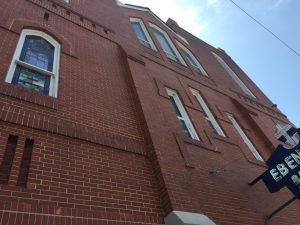
Ebenezer Baptist Church where Martin Luther King Jr. gave sermons.
Shotgun houses line one side of the street and bigger, fancier houses line the other side. Sweet Auburn was home to different classes which shows that some African Americans were able to prosper in the district.
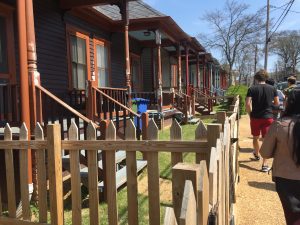
Shotgun houses on the same street as Martin Luther King Jr.’s childhood home.
Sweet Auburn was a place for oppressed African Americans to gather and fight for change, to form a community, and to prosper. Home of Martin Luther King, Auburn Avenue now attracts a crowd that celebrates those very things.
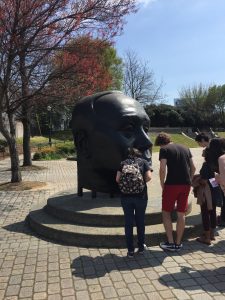
John Wesley Dobbs statue. Dobbs named the district Sweet Auburn.
Auburn Avenue has so many beautiful buildings and artwork; my favorite were the murals done on the sides of the buildings that were political statements relating to racial injustice. Although gentrification has taken over a lot of Auburn Avenue the history and some of the buildings still stand.
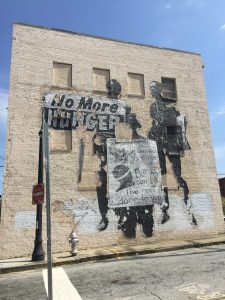
Mural on the side of a building that reads “No More Hunger, In this country you can do anything if you try But can I live next door to you”